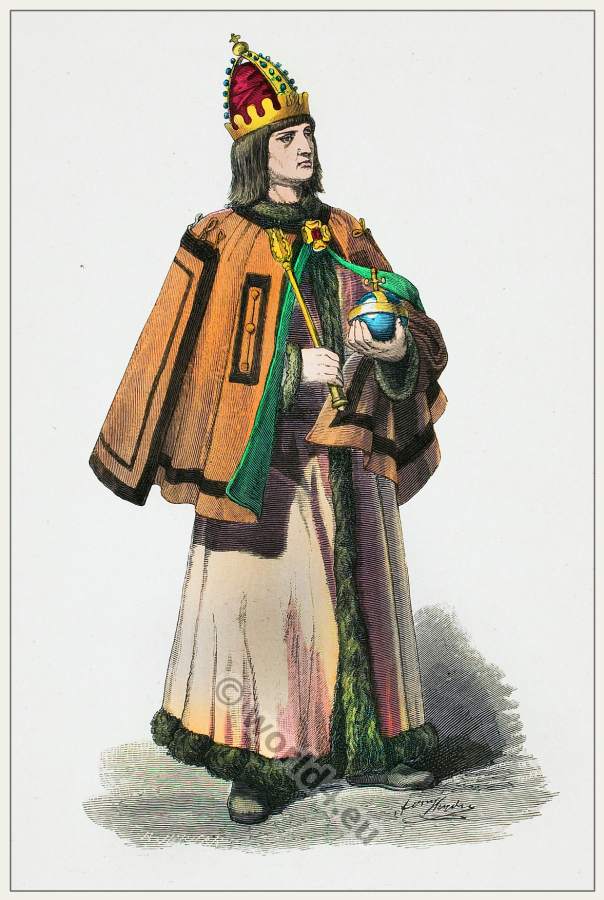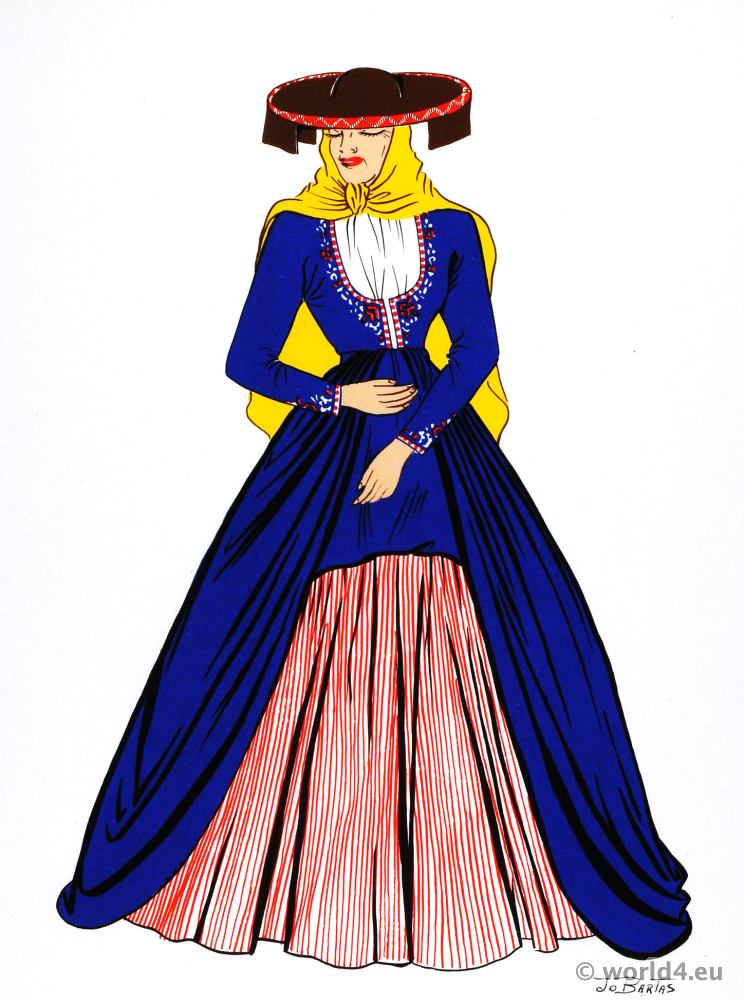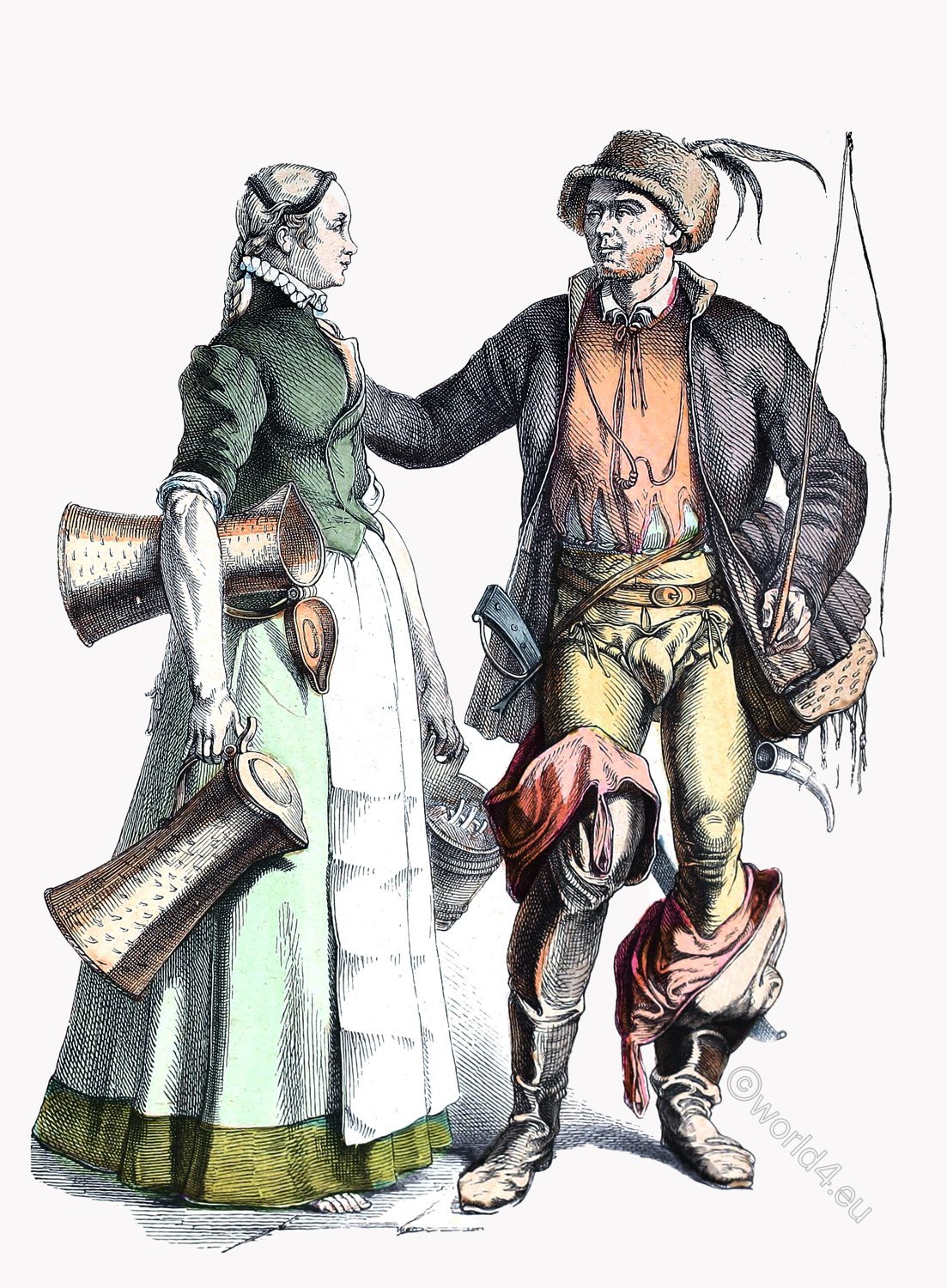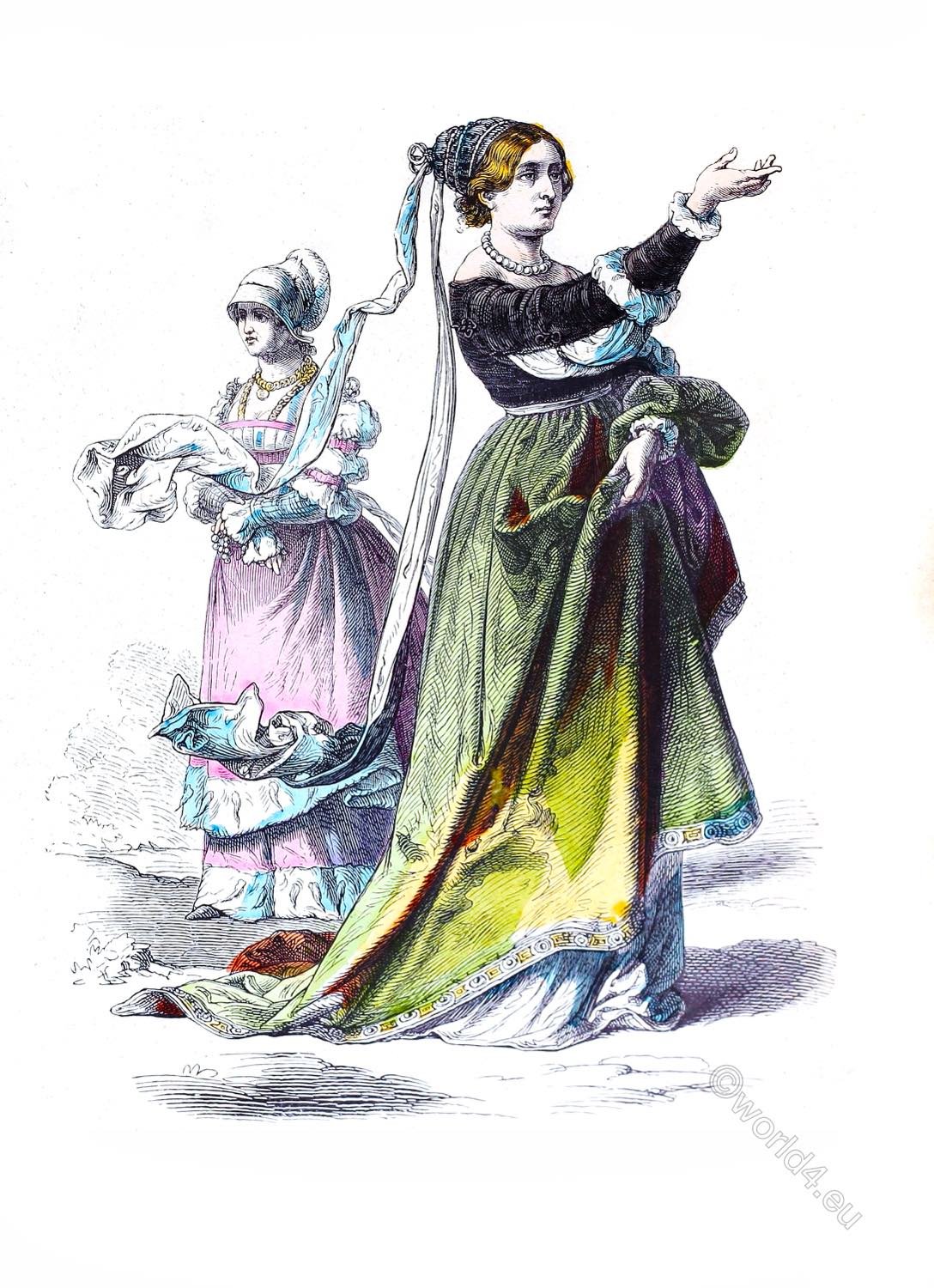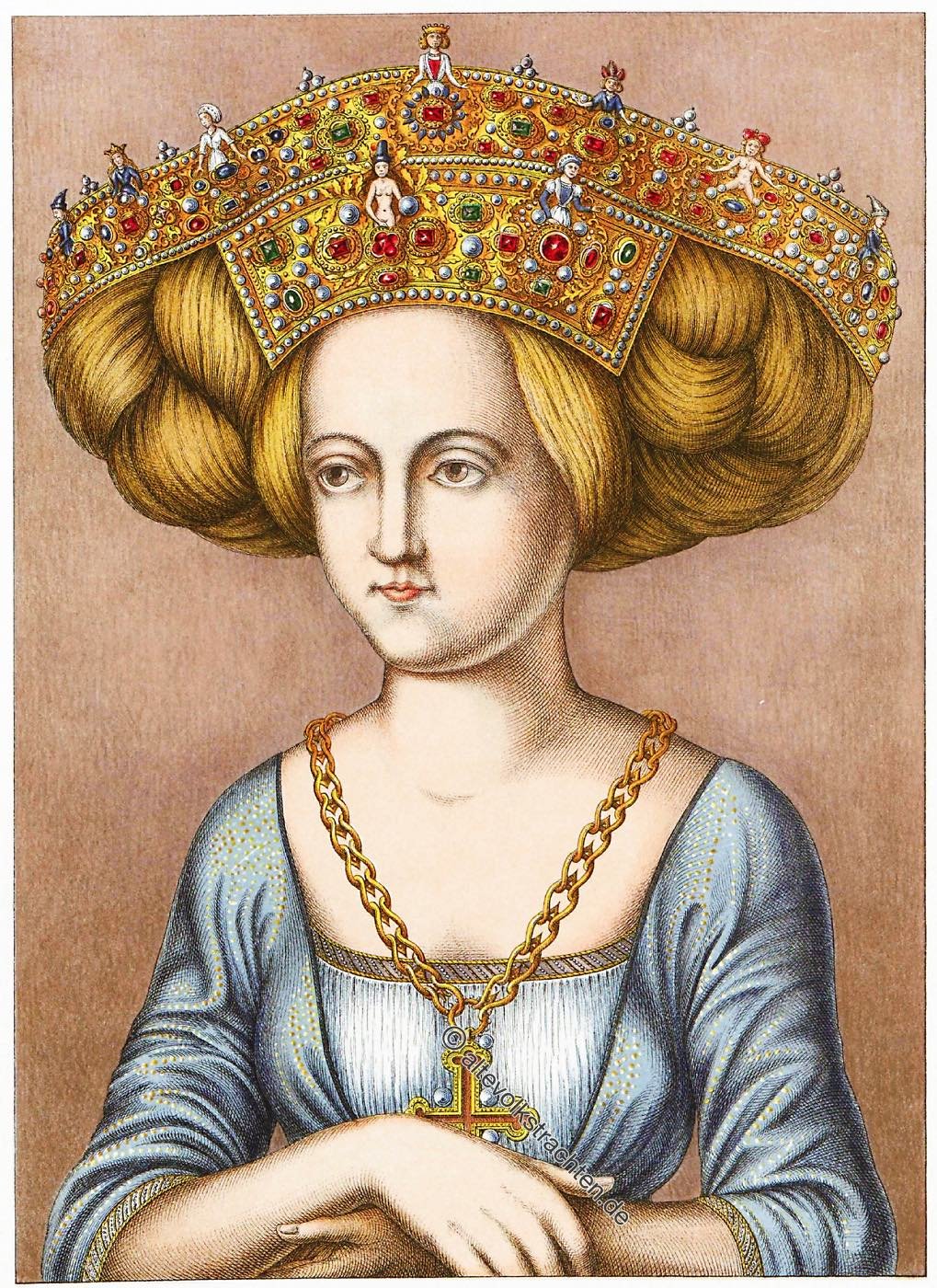
Nuremberg patrician woman in precious bridal crown. First half of the 16th century.
The portrait of a woman from the first half of the 16th century shows a bride from a rich Nuremberg patrician family. Probably from the school of Albrecht Dürer. Height 46 cm, width 34 cm.
In this painting, the bridal crown is particularly noteworthy for its richly detailed design, consisting of two broad gold bands richly set with pearls and precious stones, with the nine small female figures in gold and enamel standing out particularly.
The bands of the golden bridal crown include on both sides of the head a false hair ornament of broad plaited plaits, which are different from the real hair attached to the temples. The dress, which is wide at the front, is made of grey violet silk fabric interwoven with gold threads.
It is not known who the young woman’s portrait is. The picture is in possession of the author (Hefner-Alteneck).
The Nuremberg Patriciate.
The Nuremberg Patriciate was one of the three social bodies into which the society of the Imperial City of Nuremberg was divided together with the citizens and foreigners, and was the truly dominant class of the city until the Napoleonic occupation of 1806.
From 1256 until the French occupation and the subsequent annexation by Bavaria on 15 September 1806, Nuremberg was governed by the Council. It was divided into “Internal Council” and “Grand Council”. The Inner Council was made up of eight representatives of the Nuremberg trades, while the other members all belonged to the Nuremberg Patrician Order. Like other imperial cities, the imperial city of Nuremberg called itself a “republic”. Apart from referring to the Roman model, the term also meant opposition to the monarchical reforms that were usually typical of the governments of the time, but that of Nuremberg cannot be compared to a modern democracy, but rather to an oligarchy.
The families who were entitled to join the Nuremberg City Council declared themselves patricians during the Renaissance and included all those families who were politically, economically and socially prominent in the imperial city. Most of them came from ministerial occupations. After the fall of the Staufer Empire, most of the imperial ministerial families, such as the Pfinzinger, Stromer, Haller, Muffel or Groß, moved from the Reichsland (Terra Imperii) to the city.
Source: Traditional costumes, works of art and tools from the early Middle Ages to the end of the eighteenth century, after simultaneous originals by Dr. J. H. von Hefner-Alteneck. Published by Heinrich Keller. Frankfurt a. M. 1879-1889.
Related
Discover more from World4 Costume Culture History
Subscribe to get the latest posts sent to your email.

